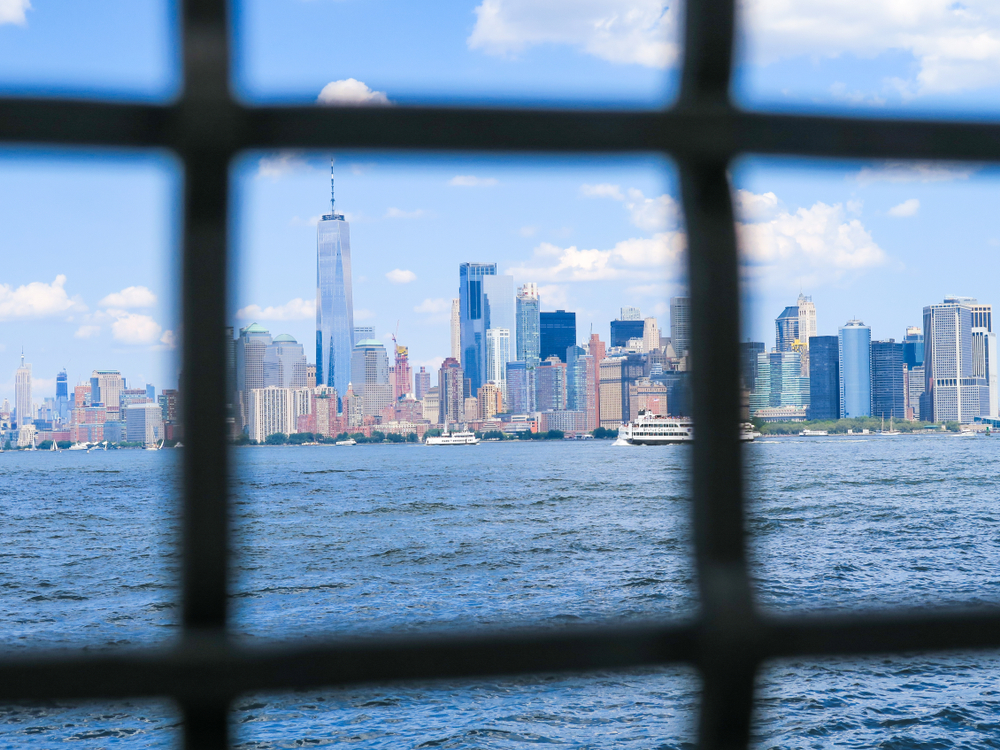![]() As of April 8, Chicago’s Cook County Jail was the top cluster for the virus that causes COVID-19 in the U.S. As of today, it’s the Marion Correctional Institution in Marion, Ohio, according to data compiled by the New York Times.
As of April 8, Chicago’s Cook County Jail was the top cluster for the virus that causes COVID-19 in the U.S. As of today, it’s the Marion Correctional Institution in Marion, Ohio, according to data compiled by the New York Times.
Why is this a problem? More importantly, why should we care about what occurs inside these institutions?
The short answer: Correctional health is public health.

Najet Miah
What happens inside will inevitably influence what happens outside. Any outbreak within our jails and prisons can cascade into the community. Once COVID-19 spreads throughout a facility, the burden of caring for these sick people will necessarily shift to local community medical facilities. Large numbers of seriously ill incarcerated individuals will strain overtaxed hospitals, increasing everyone’s morbidity and mortality.
After spending seven years in New York’s jails and prisons, I am all too aware that the inadequate health care and hygiene in correctional facilities create optimal conditions for an infectious disease outbreak. During my time at Bedford Hills and Taconic correctional facilities, it was not out of the ordinary to wait days or weeks to have my sick-call slip addressed by a doctor. I would first have to see a nurse, who would determine whether I needed to see a doctor another week later.
Access to cleaning supplies was limited, leaving us to rely on our peers to acquire larger quantities of stolen bleach. With these dynamics at play, it should be no surprise that many inmates are currently self-manufacturing sanitizer to clean phones with diluted soap and shampoo — and that this may afford them little to no protection against the virus. Sanitizers remain inaccessible to most inmates due to its high alcohol content. How can inmates stay healthy and keep their living quarters clean under such conditions during a pandemic if it is hard to do so under normal circumstances?
Transparency breeds trust
At a time of panic, pressure and uncertainty, receiving more transparency from our leaders would seem to be common sense. We need to know more than just how our loved ones inside are being exploited to meet the needs of the pandemic, such as the Rikers Island inmates who were offered $6 an hour and personal protective equipment to dig mass graves on Hart Island.
Visitation bans across all facilities within New York make it more pressing for the news to keep us updated and informed about preventive and mitigating measures being taken inside. The following are some of the questions that need to be addressed.
- How is social distancing being promoted in crowded housing units?
- What measures have been taken to protect inmate health and rights?
- How many inmates are being tested?
- What will happen in the event that medical staff or correctional staff fall ill to the virus and have to quarantine?
- How will that shortage be addressed?
- How are the medical needs of those who were sick in long-term care prior to the pandemic having their needs met?
- Are inmates being given access to sanitizer, soap and bleach?
- How are inmates who regularly have to leave their facilities to receive medical care at hospitals or other facilities being accommodated?
- To contain the spread of the disease, infection prevention protocols must be meticulously followed. Even if people are being quarantined in these facilities, to what extent can the Center for Disease Control and Prevention’s guidelines for detention facilities be observed when inmates have to line up for medication and share showers, cooking and dining spaces, toilets and dorms?
Naturally, questions about how a large-scale release of inmates would impact public safety have also surfaced. Questions about whether those released will commit crimes are valid. However, they are not the most pressing at the moment.
Should we let high-risk inmates die?
At Rikers Island, a woman named Elisa expressed her concerns, illuminating the life-or-death situation inmates are facing behind bars. Elisa was required to strip the bed of an inmate who had tested positive for the novel coronavirus. Elisa, who has AIDS, was required to do so without gloves or a mask, despite her immunocompromised status. Furthermore, her lawyer’s request for her release and a slew of other secure alternative release alternatives were denied by the Manhattan District Attorney’s office.
Despite her low security risk and pre-existing conditions, the DA’s office argued that it could not consent to her bail because she was already sentenced to state prison time. Like Elisa, scores of high-risk inmates are confronting the reality that they may die in prison.
At the same time, releasing only those at risk of complications from the coronavirus will only have a minor effect on the spread of the illness in the close quarters of jails and prisons. All inmates remain vulnerable by virtue of their environment.
In fact, even for those who are at low risk for severe illness, it’s difficult to adhere to the CDC’s recommendations to prevent the spread of the virus. While releasing more inmates certainly reduces the density within these environments and may consequently slow the spread of the virus, social distancing is nearly impossible within these facilities.
The dynamics at Bedford Hills Correctional Facility at this very moment underscore this reality. In the spirit of quarantining and self-distancing, the facility has limited movement by canceling all programs and interactions between different housing units. Still, dozens of women are still gathered around each other every day when using their housing units’ phone, as well as in cooking and recreational areas. Dormitory areas fare even worse, where as many as 60 inmates sleep together in close quarters.
For these women, only thin bed frames and partitions separate them from their bunkmates and neighbors. Rest assured, the idea of consistently maintaining a 6-foot distance is next to impossible in these spaces.
To the previously posed question, “Should we let inmates die?” I pose another: “What gives us the right to ask that question?”
The Eighth Amendment of the U.S. Constitution requires that “inmates be furnished with ... reasonable safety,” and the U.S. Supreme Court has explicitly recognized that the risk of contracting “serious contagious diseases” may constitute such an “unsafe, life-threatening condition” that it threatens “reasonable safety.” Thus, we have a constitutional failure looming over us if we continue to take a slow, business-as-usual approach to releasing inmates.
Regardless of what a person may have been accused or convicted of, no individuals deserve to be placed at higher risk of a life-threatening illness when reasonable preventive measures are available.
Najet Miah is a public health fellow for the Bard Prison Initiative. She will graduate with a bachelor’s in psychology this spring.

Pingback: PRISONS: Indifference Won’t Stop The Pandemic – Parole Illinois